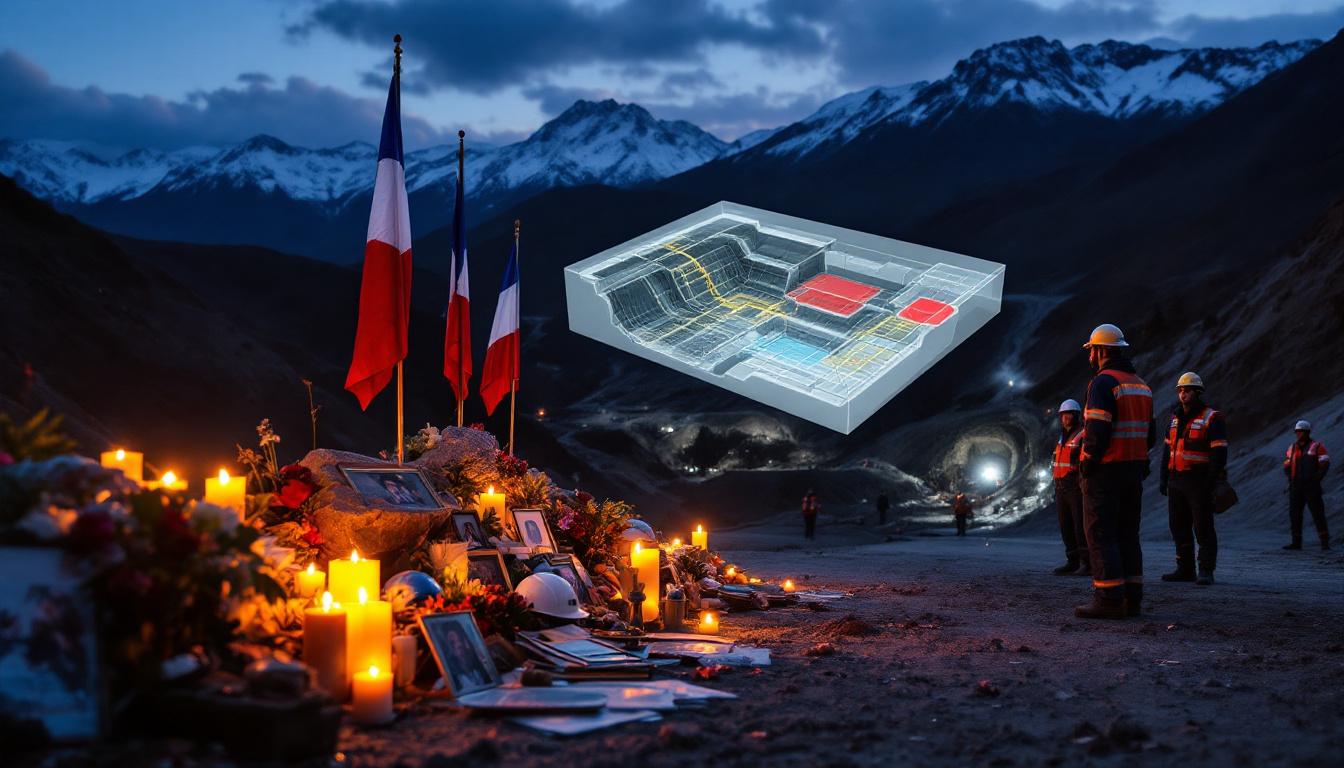What is Mine Reconciliation and Why Does It Matter?
Mine reconciliation is a critical business improvement process that compares predicted outcomes against actual results throughout the mining value chain. When implemented effectively, it serves as the quality control system of your mine operation, providing valuable insights that drive continuous improvement.
Heath, Chief Scientist at Quartex, explains the fundamental purpose: "For me, reconciliation is about showing value to shareholders by saying we thought we had X in the ground and when we mined it and processed it we got X plus or minus a bit out of the ground, so we delivered the value we promised you."
When implemented effectively, mine reconciliation enables mining companies to:
- Validate resource and reserve estimates
- Identify operational inefficiencies
- Demonstrate value delivery to shareholders
- Support continuous improvement initiatives
- Enhance decision-making with data-driven mining
One compelling example comes from a Brazilian iron ore mine that improved its reconciliation tolerance from 2% absolute iron grade to within 0.5% over just two years by implementing a systematic approach. This improvement directly translated to enhanced operational efficiency and shareholder value.
Despite its importance, reconciliation practices often lack standardization, sustainability, and proper implementation. Many operations still struggle with fragmented approaches that fail to deliver consistent value across the mining lifecycle.
The Challenges of Implementing Effective Reconciliation
Inconsistent Terminology and Approaches
One of the most significant barriers to effective reconciliation is the inconsistent terminology used across the industry. Different sites and companies may use various terms like "F-factors," "R-factors," or descriptive phrases to represent the same comparison points. This creates confusion when:
- New team members join a site
- Consultants are brought in to review processes
- Companies attempt to standardize across multiple operations
- Industry professionals try to share best practices
Heath notes that when starting reconciliation projects at new sites, the terminology confusion becomes immediately apparent: "Every time I go to a mine and say, 'Okay, we're going to build this reconciliation team. Let's get in a room and start drawing this map of the value chain…' And then an argument breaks out saying, 'No, it doesn't happen that way.'"
The Political Dimension of Reconciliation
Reconciliation is inherently political because it often:
- Directly impacts performance metrics tied to bonuses
- Highlights discrepancies between departmental outputs
- Reveals potential weaknesses in estimation or operational practices
- Requires cross-functional collaboration in typically siloed organizations
As Heath noted in his experience with mining companies including Anglo Gold Ashanti, Goldfields, and FMG, "Reconciliation becomes problematic when departments operate in swim lanes, collecting their own data in isolated systems without sharing critical information that could benefit others."
This siloed approach creates significant blind spots: "People collect their own data and put it in their own database and other people in other swim lanes don't get to see it. They don't even know it exists even though it would really add value to their work."
Lack of Systematic Approach
Many mines approach reconciliation as a technical exercise rather than a business system. This results in:
- Inconsistent data collection and comparison
- Reactive rather than proactive analysis
- Limited stakeholder buy-in
- Unsustainable practices that collapse when key personnel leave
Industry Insight: The prevalence of homegrown spreadsheets and databases as primary reconciliation tools indicates the immature state of reconciliation practices at many mining operations. These ad-hoc solutions typically lack proper governance, audit trails, and often disappear when their creator leaves the company.
The Three Pillars of a Sustainable Reconciliation System
A truly effective management system for mine reconciliation requires three interconnected components that Heath describes as a "vendor" model with principles and enablers supporting the central process.
"It's been my experience that people doing reconciliation at a mine don't think about the principles and they don't think about the enablers, and they should start there. Always start with philosophy," Heath emphasizes.
1. Guiding Principles
These foundational concepts establish the philosophical approach to reconciliation:
- Value Chain Perspective: Examining the entire process from exploration to final product
- Team-Based Approach: Including perspectives from all relevant departments
- Data Quality Focus: Ensuring information is fit-for-purpose and properly understood
- Continuous Improvement Mindset: Using findings to drive operational enhancements
- Balance Between Cost and Value: Recognizing that proper reconciliation requires investment but delivers returns
Heath emphasizes the importance of a balanced perspective: "Value is revenue minus cost. So, you can't focus just on the revenue and you can't focus just on the cost, which is what we see time and time again in mining."
2. Key Enablers
These are the practical elements that make reconciliation possible:
- Leadership Support: Senior management must visibly value and champion reconciliation
- Reconciliation Champion: A credible, experienced professional who can influence across departments
- Cross-Functional Team: Representatives from geology, mining, processing, and other relevant areas
- Appropriate Resources: Funding for necessary systems, training, and improvement initiatives
- Clear Documentation: Well-defined procedures, terminology, and reporting standards
3. Structured Process
The iterative workflow that drives continuous improvement:
- Planning: Establishing clear objectives and metrics
- Data Collection: Gathering information from across the value chain
- Analysis: Identifying patterns, trends, and root causes
- Action: Implementing improvements based on findings
- Review: Evaluating the effectiveness of changes
Heath shares a powerful metric for demonstrating success: "Over the last 18 months, we did six improvement projects. We thought they would deliver X value. And guess what? We got within 10% of that." This type of quantifiable outcome demonstrates the power of a systematic approach to reconciliation.
Building Your Reconciliation Champion Team
The Ideal Reconciliation Champion
The reconciliation champion should be:
- A generalist with broad understanding across the mining value chain
- Credible and respected across departments
- Positioned at a management level with influence (often Technical Services Manager)
- Skilled in communication and facilitation
- Able to operate with humility while maintaining authority
Heath explains: "The reconciliation champion needs to understand enough about all activities in the mining value chain to identify potential issues. They need geological knowledge, planning experience, and understanding of processing—but most importantly, they need to be able to bring people together as a team."
Regarding organizational positioning, Heath adds: "I like to see this person be the manager of technical services. That for me is a really good fit if it's the right person and if they've got credibility."
Creating a Cross-Functional Team
Rather than relying on a single person, effective reconciliation requires a team that includes:
- Geologists who understand the resource model
- Mining engineers who oversee extraction
- Surveyors who track material movement
- Metallurgists who monitor processing
- Operators who see day-to-day realities
This cross-functional approach breaks down departmental silos and encourages knowledge sharing that might otherwise never occur. The team structure directly addresses the "swim lane" problem that plagues many mining operations, fostering collaboration between departments that may rarely interact otherwise.
Key Insight: The reconciliation champion role should be viewed as a strategic position that can significantly impact operational performance, not merely a technical role. The most successful champions have both the technical knowledge and the people skills to influence across departmental boundaries.
Implementing a Structured Reconciliation Process
Step 1: Document Your Material Flow
Create a clear visual representation of how material moves through your operation:
- Map all key transfer points where material changes hands
- Define measurement points where quantity and quality are assessed
- Identify data collection methods at each point
- Document the systems where information is stored
This mapping exercise often reveals misunderstandings about the process itself, creating valuable learning opportunities even before formal reconciliation begins.
Heath describes this crucial first step: "Let's start with the material flows. Let's track them through the process. And we start there and everyone says, 'Yep, this is what happens.' And then an argument breaks out saying, 'No, it doesn't happen that way.'" These disagreements reveal misalignments in understanding that must be resolved before effective reconciliation can occur.
Step 2: Establish Clear Terminology
Develop and document site-specific terminology that clearly describes what is being compared:
- Use descriptive language rather than abstract codes
- Create visual aids showing comparison points
- Document definitions in standards or procedures
- Ensure all team members understand and use consistent language
Heath emphasizes the importance of clarity: "Using descriptive language. So I agree with that in principle… be descriptive, write it down in a standard and show it on a map, right? Use imagery so that people have got some chance of remembering it."
For example, instead of "F2," use "Delivered to Plant vs. Resource Model" to clearly communicate what's being compared.
Step 3: Define Appropriate Tolerance Limits
Establish realistic but challenging tolerance limits that:
- Reflect the nature of your deposit tiers guide and operation
- Consider the non-linear aspects of mining processes
- May be asymmetric rather than simple ±% ranges
- Tighten over time as processes improve
Remember that tolerance limits are not universal truths but tools for driving improvement. As Heath noted: "If your reconciliation is consistently within tolerance, you're either extremely good or your tolerances are too wide."
Step 4: Implement Regular Review Cycles
Establish a rhythm of reconciliation reviews:
- Daily operational checks
- Weekly trend analysis
- Monthly performance reviews
- Quarterly improvement planning
- Annual strategic assessment
Each level should have appropriate participants and clear action-tracking mechanisms. This multi-layered approach ensures issues are identified and addressed at the appropriate level and timeframe.
Using Technology to Enable Better Reconciliation
Data Integration Systems
Modern reconciliation benefits from systems that:
- Connect data from multiple sources
- Provide visualization of trends
- Enable drill-down into problem areas
- Support workflow management for actions
- Document decisions and approvals
Heath notes that many mining companies are still using rudimentary tools: "Our competitors are inhouse built spreadsheets and databases." This reliance on basic tools limits the potential for sophisticated analysis and governance.
For small mining companies, implementing dedicated reconciliation software typically starts at around $50,000 in annual recurring revenue, according to pricing mentioned by Heath. While this represents an investment, it delivers significant value through improved governance and decision-making.
Digital Workflows
Implementing digital workflows helps:
- Standardize reconciliation processes
- Ensure appropriate reviews and approvals
- Create audit trails of decisions
- Notify stakeholders of important changes
- Maintain institutional knowledge when personnel change
Heath highlights the governance benefits: "People who value good governance love our software… because anything that happens in the system is tracked. There's a full audit trail of who did what when as part of a reporting process."
This audit capability is particularly valuable for companies with operations in multiple jurisdictions or those subject to stringent reporting requirements. It also provides important "guide rails" for young professionals developing their competencies in resource estimation and reconciliation.
Technology Insight: While sophisticated software can enhance reconciliation practices, the technology alone cannot solve fundamental process or organizational issues. The most successful implementations pair appropriate technology with strong process design and team development.
Measuring Success in Your Reconciliation System
Beyond Simple Variance Metrics
Effective reconciliation systems should be evaluated on:
- Trend improvements over time
- Reduction in unexplained variances
- Number of improvement initiatives implemented
- Value created through identified opportunities
- Stakeholder engagement and satisfaction
The Brazilian iron ore operation mentioned earlier demonstrates this holistic approach to measurement. Their focus wasn't simply on hitting the 0.5% reconciliation target but on using the reconciliation process to drive continuous improvement throughout their operation.
Change Management Assessment
Use tools like the ADKAR model (Awareness, Desire, Knowledge, Ability, Reinforcement) to assess:
- Team awareness of reconciliation objectives
- Desire to participate in the process
- Knowledge of required procedures
- Ability to perform necessary tasks
- Reinforcement through leadership support
Successful reconciliation is as much about organizational change as it is about technical competence. Regular assessment of these human factors can identify potential management red flags before they impact operational performance.
The Future of Mine Reconciliation
Industry Standardization Efforts
The mining industry is moving toward greater standardization in reconciliation practices:
- Reporting codes like JORC are beginning to address reconciliation
- Industry working groups are developing best practices
- Software solutions are emerging to support standardized approaches
Heath draws a parallel to the evolution of resource reporting: "With the advent of JORC and putting some minimum requirements for reporting in place I think we have seen improvement in resource and reserve estimation… So when I reflected on that, I thought if we do that for reconciliation too, we've got a chance."
This suggests that formal reconciliation standards may follow a similar path to resource reporting standards, with industry evolution trends eventually requiring specific reconciliation practices and disclosures.
Public Reporting Considerations
Just as resource estimation practices improved with public reporting requirements, reconciliation may follow a similar path:
- Increasing shareholder interest in operational performance
- Growing expectations for transparency in mining results
- Potential for reconciliation to become a standard disclosure element
As investors become more sophisticated in their understanding of mining operations, the demand for transparent reconciliation reporting is likely to increase. Forward-thinking companies are already preparing for this shift by implementing robust reconciliation systems.
Implementing Your Reconciliation Management System
Starting Small
Begin with:
- A clear visual map of your material flow
- Documented terminology and definitions
- A cross-functional team with defined roles
- Regular review meetings with action tracking
These foundational elements can be implemented with minimal investment while delivering immediate benefits in terms of cross-functional understanding and communication.
Building Momentum
As your system matures:
- Tighten tolerance limits to drive improvement
- Implement more sophisticated analysis techniques
- Integrate reconciliation findings into planning processes
- Develop predictive capabilities based on historical patterns
The progression from basic reconciliation to advanced predictive analytics represents a maturity journey that can take several years, depending on the organization's starting point and commitment to improvement.
Implementation Insight: Start with the people and process elements before investing heavily in technology. A sophisticated system built on flawed processes or without proper organizational support will fail to deliver sustainable value.
Conclusion
A sustainable mine reconciliation system is not merely a technical exercise but a comprehensive management approach that balances principles, enablers, and processes. By investing in proper reconciliation practices, mining companies can improve operational performance, enhance decision-making, and demonstrate value delivery to stakeholders.
The most successful reconciliation systems recognize that this is fundamentally about people working together effectively—breaking down silos, sharing knowledge, and collectively pursuing continuous improvement. With senior leadership support, clear processes, and the right team structure, reconciliation can transform from a compliance activity into a strategic advantage.
As Heath summarizes: "The activities that I put under that banner are simply business improvement, continuous business improvement." By viewing reconciliation through this lens of continuous improvement rather than mere variance reporting, mining companies can unlock significant value throughout their operations and prepare for upcoming industry consolidation insights.
Disclaimer: The implementation of mine reconciliation systems involves significant technical and organizational considerations specific to each operation. The approaches described in this article should be adapted to suit individual site conditions and corporate requirements. Always consult with qualified professionals when designing reconciliation systems for regulatory compliance purposes.
Want to Spot the Next Major Mineral Discovery Before the Market Does?
Discovery Alert's proprietary Discovery IQ model instantly identifies significant ASX mineral discoveries, giving you a crucial edge in both short-term trading and long-term investing opportunities. Explore how major discoveries have historically delivered exceptional returns by visiting the Discovery Alert discoveries page.




